I'm setting up my multiplus compact to work with my Renogy lithium phosphate batteries. When I select the battery tipe of battery to lithium is telling me that I need Assistant. What is that? Which one do I use?
- Home
- Anonymous
- Sign in
- Create
- Spaces
- Grafana
- Node-Red
- Unsupported topics
- Questions & Answers
- Modifications
- Communauté francophone
- Deutschsprachiger Bereich
- Preguntas en Español
- Explore
- Topics
- Questions
- Ideas
- Articles
- Badges
question
Renogy is not a battery that has been tested and approved by Victron:
https://www.victronenergy.com/live/battery_compatibility:start
You will need to contact your battery supplier or Renogy themselves and see if they have a recommended configuration when using Victron Equipment.
Others in the community may also have information or experience. Some prior questions and answers about Renogy are here.
Matthijs addressed that question here:
I don’t see the word Victron anywhere in the linked thread. But since they are the second largest selling brand for solar RV installations in the US I am assuming they failed the testing process?
That’s not a great assumption, Victron as a company is based in Europe (The Netherlands to be exact). Renogy isn’t available directly in Europe at this time as far as I know.
They might be the second largest USA RV solar panel brand (I use them myself), but they are most definitely not the second largest lithium battery on the market.
Fair enough. I was looking at their brand in general and did not break it down by share of the battery market. But they are still a major player and it seems like a significant oversight to ignore that.
There are hundreds if not thousands of small companies trying to make it in the drop-in lithium battery space. It is a ton of work to certify one of them, and each new BMS design they come out with could trigger rework. It's unrealistic (and economically infeasible) to do all of that with more than a handful of vendors.
The good news is that most of these batteries work similarly and the Victron equipment is pretty configurable. You just have to do some of the work yourself.
Happy to do the work myself. But I'm not as smart as the EE's that know this stuff.
For example, here are the Renogy specs: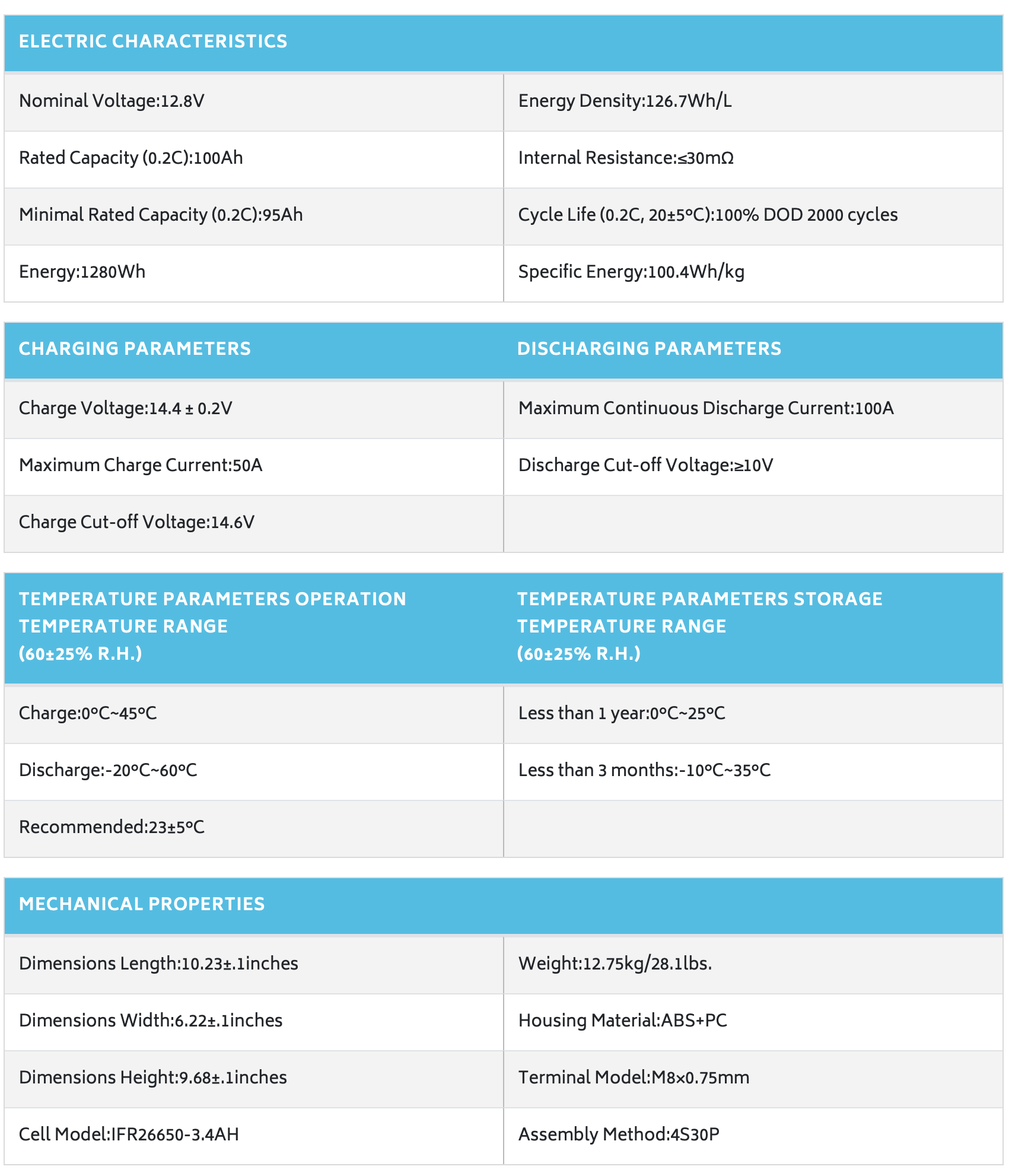
And here is what I think that means for the Victron battery monitor (using 2 100Ah lithium batteries from Renogy):
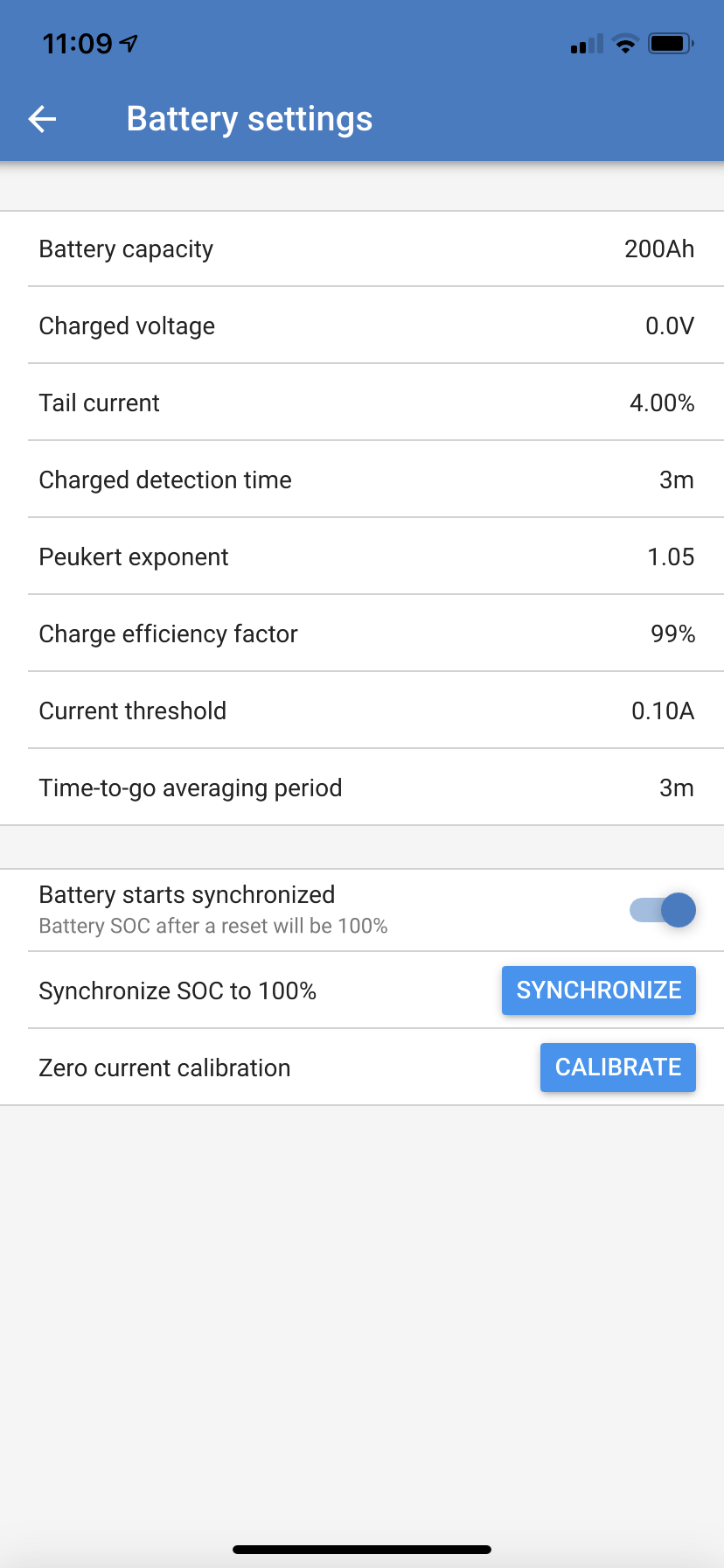
And here is what I think the solar charge controller should look like:
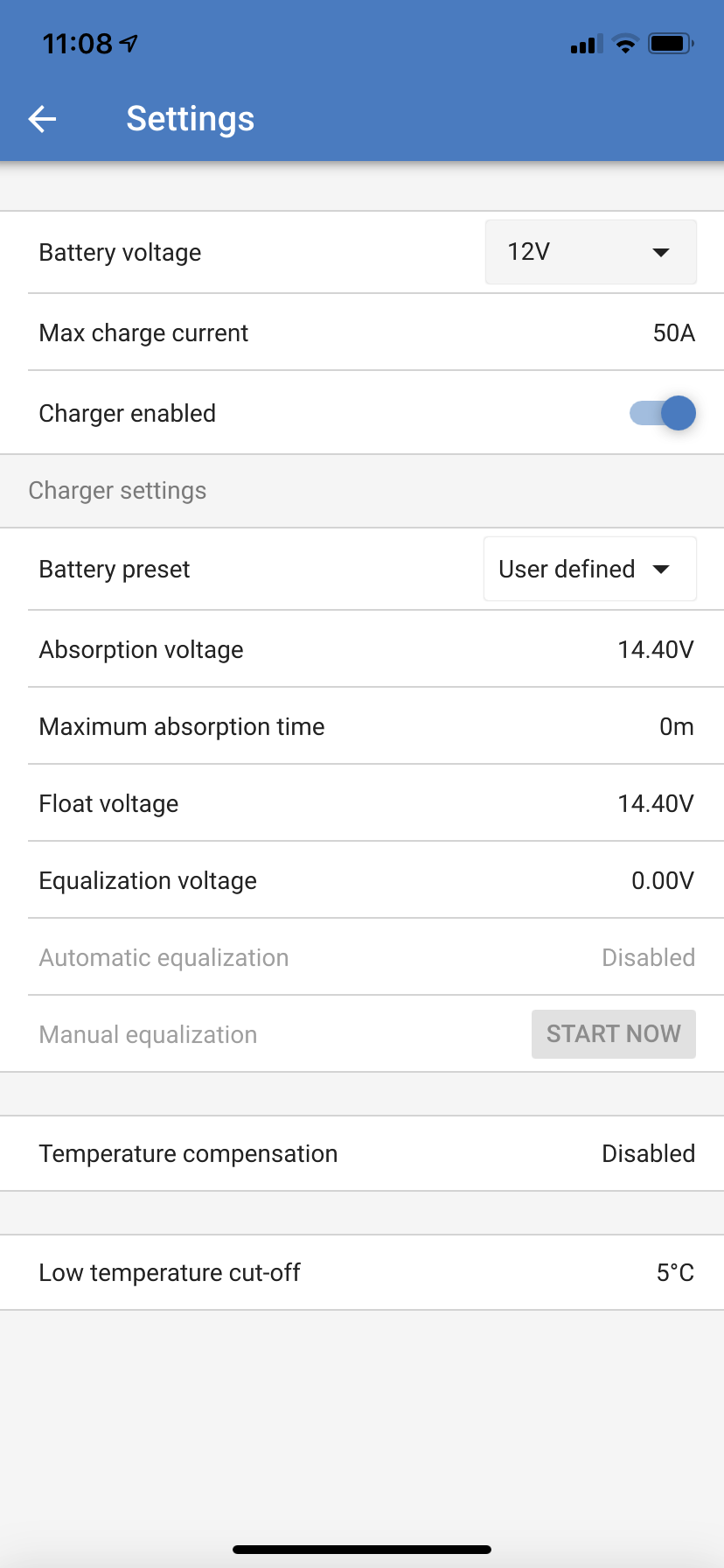
But not being an EE, I have to make educated guesses at how to translate the specs on the Renogy battery document into the settings in the Victron products.
So maybe there is a middle ground. If certification is too onerous, perhaps advice regarding "if the specs say this then the settings should be this" would be a great piece of customer service...
Good suggestion. But no inverter-charger vendor does that to my knowledge... so it would be a first!
One thing you can do is read up on other’s settings, here and elsewhere.
Another option is to ask Renogy for their advice. (good luck)
Finally, you could contribute your “answers” here and maybe pay it forward.
Some of the settings are pretty much personal preference, with trade offs each way. There may not be one true answer. But I do think a set of templates or guide would be nice to have. (It’s not really that complicated.)
14.4v is way too high as a float voltage!!! You will kill the batteries if they get that voltage after they’re full. Reduce that to 13.5v as per the victron default lithium settings.
14.4 is perfect as absorbtion voltage,
Thanks but am not sure what it says because:
Thanks for this. It’s kind of crazy but that was the Renogy suggestion. I’ll dial it back because I’m sure if I kill the batteries that way they won’t consider it a warranty issue.
Thanks though I am still not sure what you mean. Renogy wants no float voltage at all.
But until Victron makes that an option (please Victron, add this option and also a pin option to lock out equalization) then at Renogy engineering their belief appears to be that to cancel out this shortcoming from victron, setting float to 14.4 achieves the same thing.
I guess your link suggests the engineers at Renogy are wrong?
That Being said, my AC charger, optimized for lithium but not adjustable, is set to the following parameters.....
Would be great to see Victron pick one up. This will influence how I build out the rest of my monitoring, converting, controlling aspects of my system.
You do not need "tested" lithium batteries, or a special assistant. I am using 12x 960Wh DIY lithium battery modules built from 18650 cells, which works beautifully with my split-phase ESS, without a "Lithium Battery Assistant" installed on any Multi in my setup.
You do however at least need some basic knowledge about the battery you are planning on using, such as the chemistry, and number of cells. Here is how I have my charger profile configured, as you can see, I do not currently have a specific "battery type" selected, what I did was start by selecting the LifePO4 Lithium option, which did tell me I need an assistant installed (for communicating with the BMS, which I ignored), then I just customized the voltages for my particular battery. As soon as you start customizing the options, the "battery type" is automatically set to "no default" which is still just fine for Lithium batteries. Do leave the "lithium batteries" box checked, this alters the charging curve slightly.
The purpose of a lithium battery "assistant" is so the MultiPlus can communicate with the Battery Management System on your battery pack, if in the event that one individual cell in the pack goes over voltage, the idea is the BMS would then be able to tell the MultiPlus to stop charging. If you are using "incompatible" lithium batteries as I am, you should take care to ensure that the "absorption voltage" is set lower than the sum of the max cell voltages of your pack. For example, my battery is 7S NMC, each cell has a maximum recommended charging voltage of 4.2v, multiply that by 7, and you now have the maximum "pack" voltage, which is 29.4. To avoid any issues (and also prolong the battery life), my MultiPlus is set with a max absorb voltage of 28.6, divide that by 7, and you will find that the individual cells cease being charged when they reach around 4.1V. If for some reason one modual becomes imbalanced, and one of the 7 cells does reach the 4.2v cutoff, the BMS will shutdown that module, preventing the MultiPlus from charging it further. If too many modules shutdown, the overall DC voltage will rise when the MultiPlus tries to feed in additional current, and it will eventually stop charging altogether this way. Conversely, your low voltage cutoff should be set higher than the sum of the individual cells' low voltage cutoffs to avoid the same issue at the low end.
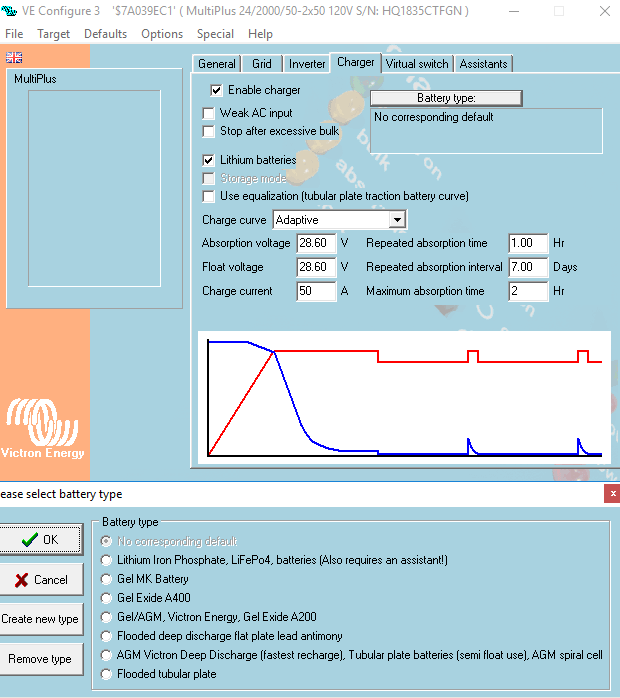
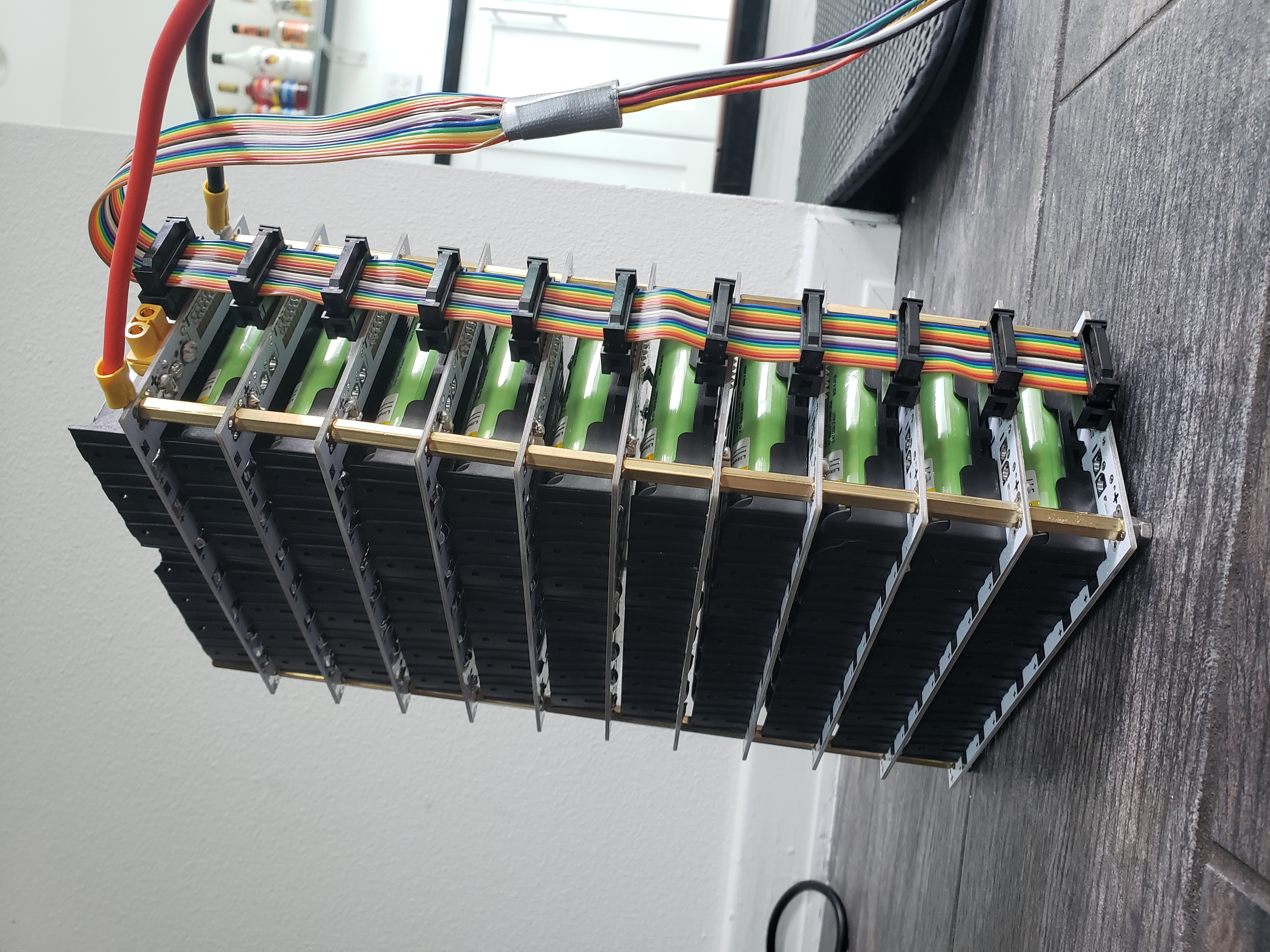
@ee21 is your battery pack constructed with Jehu Garcia's PCBs? Do you use his BmS as well? I like the system but boy does it seem expensive. I have a Tesla module I would like to disassemble to make a 7s pack.
Tom
Related Resources
Additional resources still need to be added for this topic
Did You Know - How to create a battery profile for non-Victron batteries?
question details
14 People are following this question.
